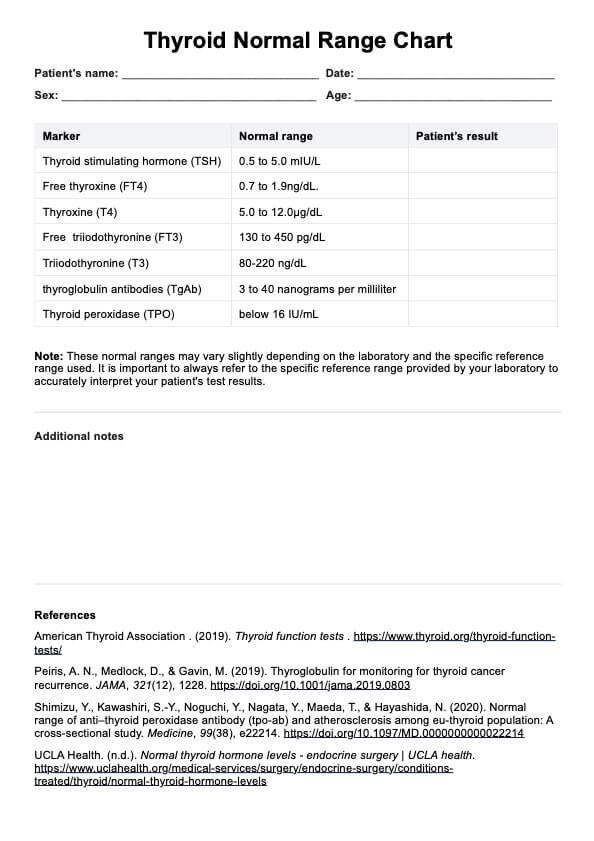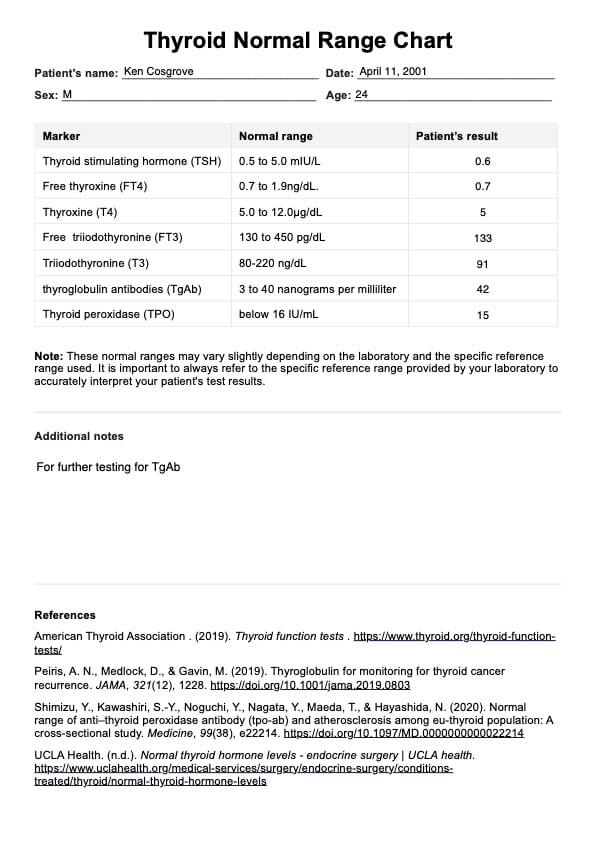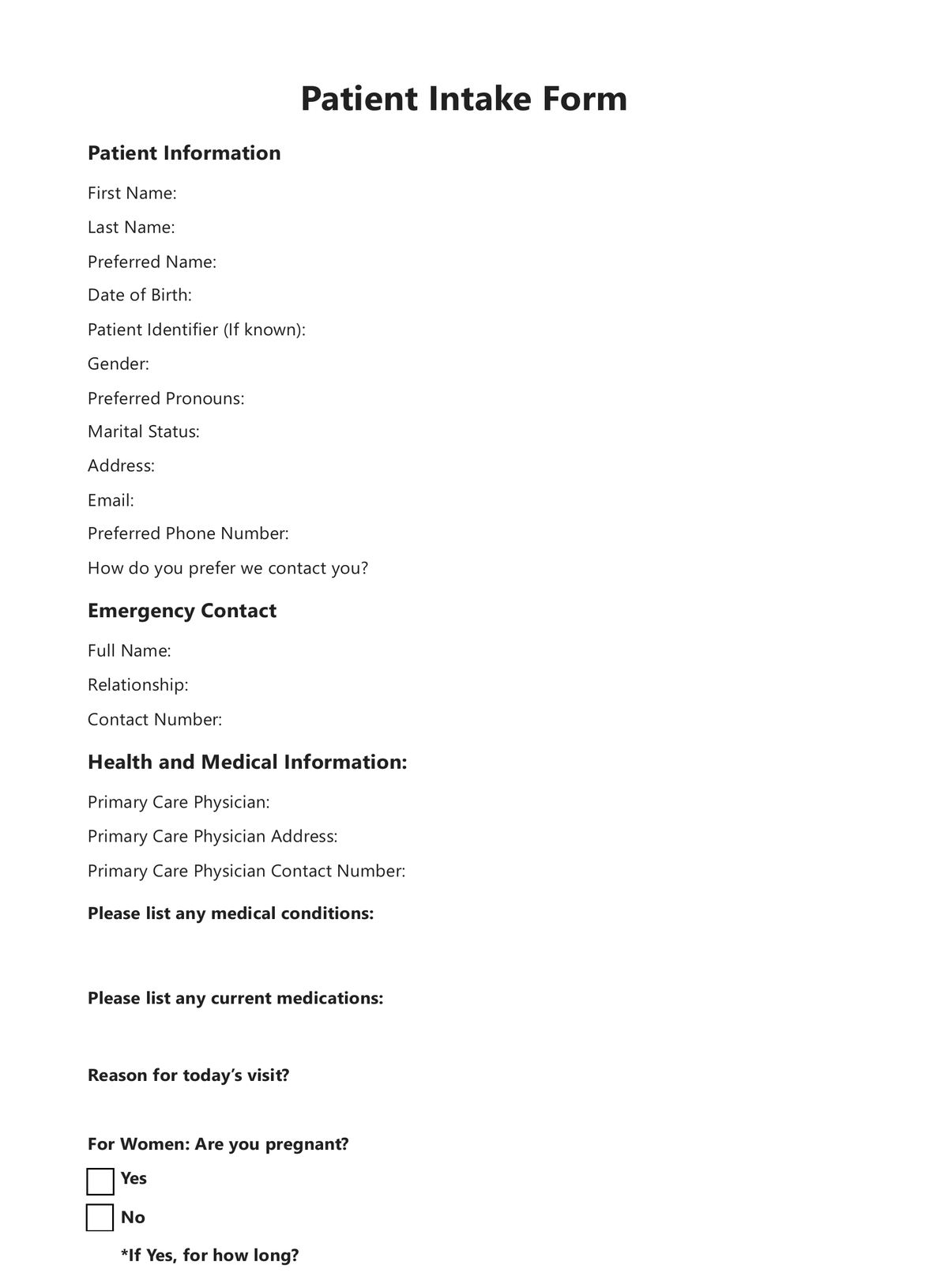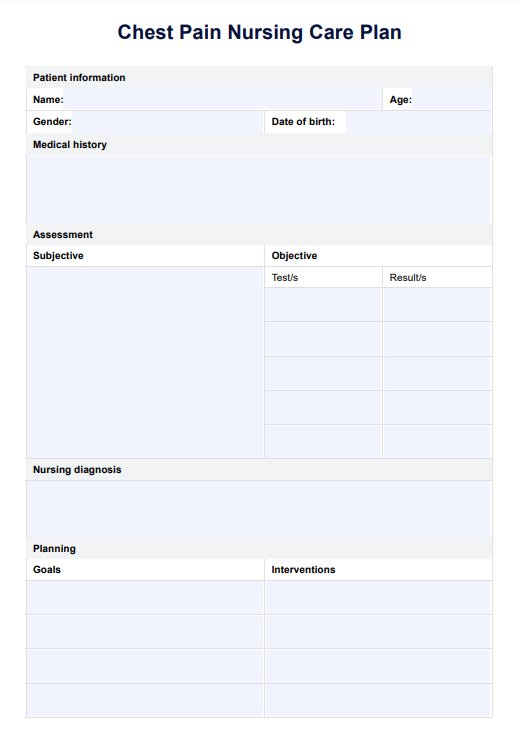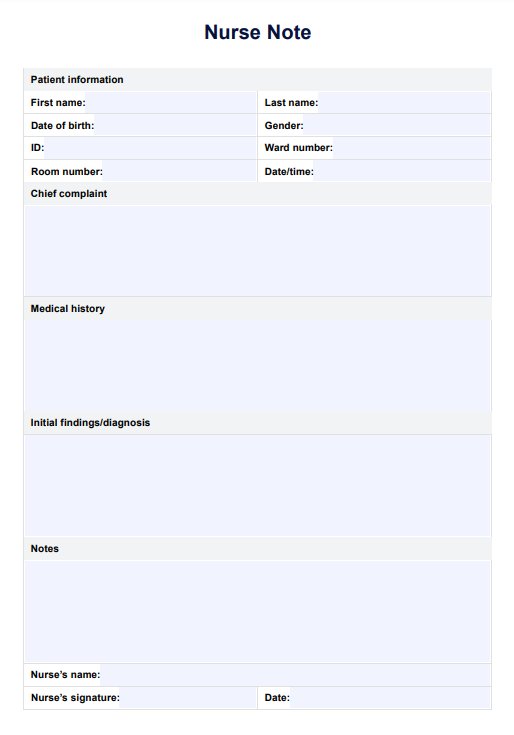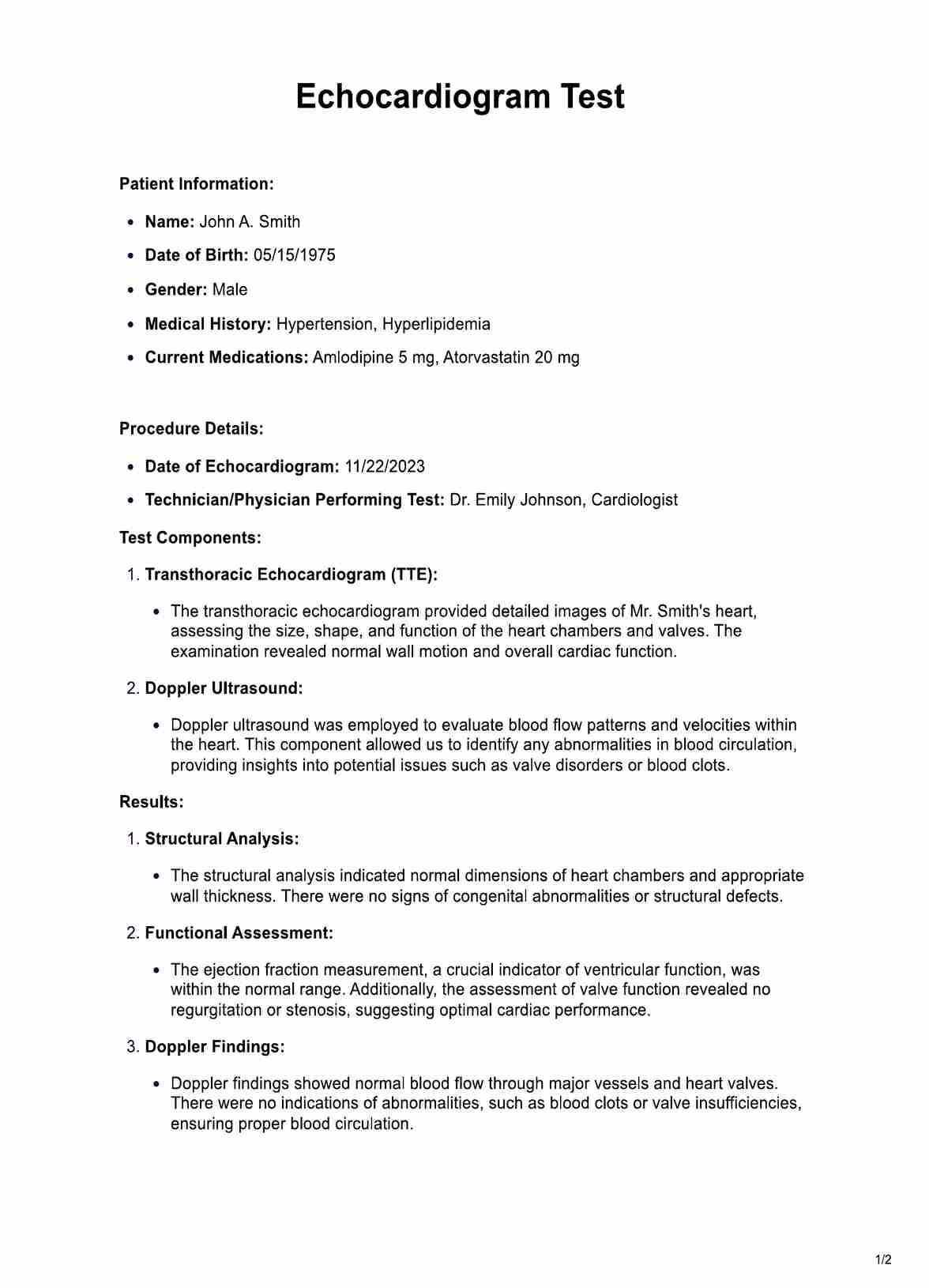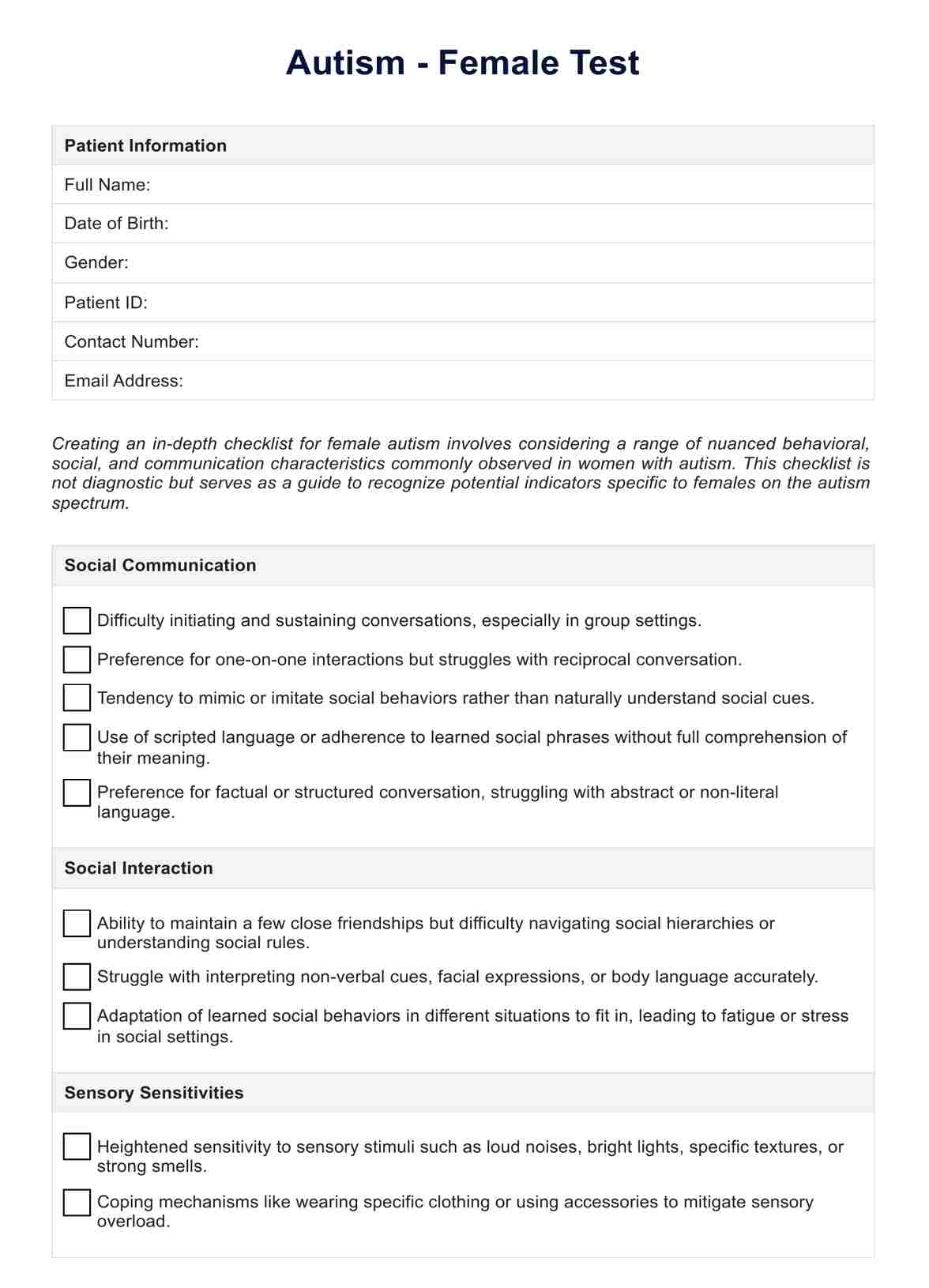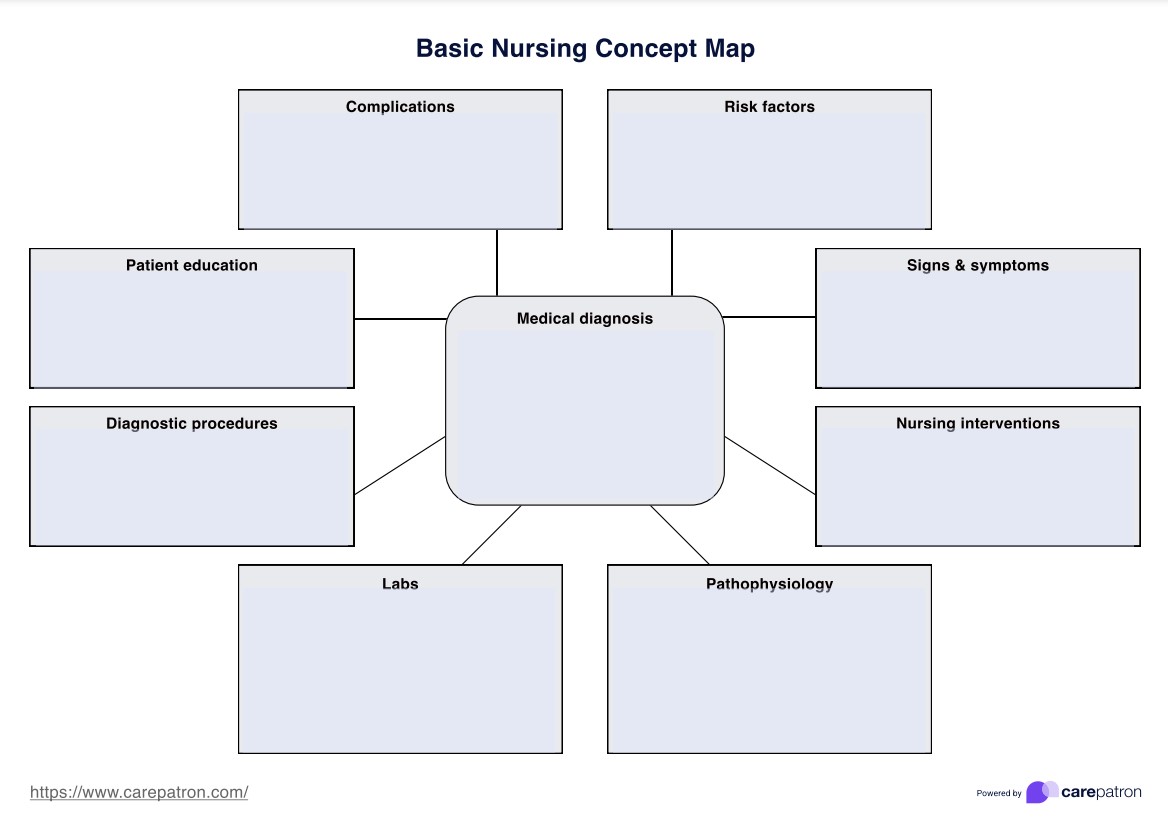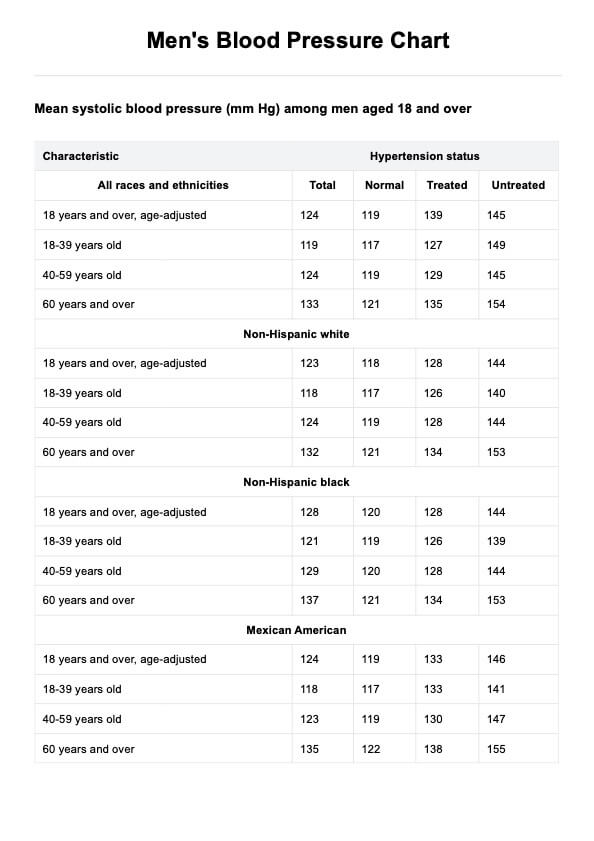Thyroid Normal Range Chart
Learn about the normal thyroid hormone ranges and download our Thyroid Normal Range Chart PDF template!


What are thyroid hormones?
Below the Adam's apple is a small butterfly-shaped gland called the thyroid gland. This gland produces thyroid hormones, mainly thyroxine (sometimes called T4) and triiodothyronine (sometimes called T3). These hormones play essential roles in our body, including the following:
- Digestion and metabolism: They convert the food that we eat into energy. The higher the amount of these hormones, the higher our metabolism gets, which also means an increase in energy usage.
- Weight regulation: Through energy expenditure, thyroid hormones help us regulate our body weight.
- Blood pressure regulation: They help balance our blood pressure and keep it at normal levels, and by extension, they also help regulate our heart rate.
- Internal temperature regulation: These hormones help regulate our body temperature by influencing how much body heat is produced and dissipated.
- Growth: These hormones influence the development of our hair, nails, and skin.
The thyroid gland works alongside the hypothalamus and the pituitary gland. The hypothalamus releases thyrotropin-releasing hormones (sometimes called TRH). These hormones nudge the pituitary gland to release thyroid-stimulating hormones (sometimes called TSH), which stimulate the thyroid gland to release T3 and T4.
Thyroid Normal Range Chart Template
Thyroid Normal Range Chart Example
How to use a Thyroid Normal Range Chart
A Thyroid Normal Range Chart is a table that shows healthcare professionals and their patients the normal ranges of thyroxine, triiodothyronine, and thyroid-stimulating hormones or normal TSH levels. It also indicates the normal levels of thyroid antibodies: thyroid peroxidase (TPO) and thyroglobulin antibodies (TgAb).
The former is an enzyme that emerges whenever the immune system mistakenly attacks the thyroid gland. Abnormal elevations in TPO indicate a thyroid-related autoimmune condition, like Hashimoto's disease.
The latter is an antibody that attacks thyroglobulin, the protein the thyroid gland makes. These antibodies have the potential to destroy the thyroid gland. Abnormal elevations in TgAb also indicate a thyroid-related autoimmune condition.
Thyroid Normal Range Charts are a reference healthcare professionals can use when needed, especially when reading thyroid test results and explaining the findings to patients. All they need to do is look at the chart to help with their interpretations and decision-making based on the results.
How to interpret thyroid normal ranges
Thyroid Normal Range Charts show the following:
- Thyroid-stimulating hormone (TSH)
- Total T4
- Free T4 (active T4)
- Total T3
- Free T3 (active T3)
- Thyroid peroxidase (TPO)
- Thyroglobulin antibodies (TgAb)
They indicate the normal and optimal ranges a patient should have. For example, abnormal results on a TSH test can lead to the diagnosis of various thyroid conditions like underactive thyroid or overactive thyroid. For patients receiving thyroid hormone replacement therapy or other thyroid medication, this chart can help track their progress.
When is it best to use Thyroid Normal Range Charts?
You can use a Thyroid Normal Range Chart during the following:
Thyroid function testing and diagnosis
Thyroid function tests are often part of routine check-ups, whether patients visit a clinic or hospital for a required annual physical examination or check-ups due to a family history or personal history of thyroid dysfunction.
By having the chart ready, professionals can immediately interpret how their patient is faring in terms of thyroid function during each visit.
Routine check-ups
Thyroid Function Tests are often part of routine check-ups, whether patients visit a clinic or hospital for a required annual physical examination or check-ups because they have a family history or history of thyroid dysfunction.
By having the chart ready, professionals can immediately interpret how their patients are faring regarding their thyroid function at every visit.
Patient monitoring
Suppose a patient is diagnosed with thyroid dysfunction or a condition like hypothyroidism or hyperthyroidism. This chart can be used during monitoring check-ups to see if thyroid hormones are regulated and within normal/optimal levels. Regular TSH and thyroid hormones testing is vital to ensure the effectiveness of thyroid medication and thyroid hormone replacement therapy.
Commonly asked questions
No. You must conduct other thyroid tests to confirm the possibility of thyroid disease and then diagnose the patient’s specific thyroid problem. The chart helps determine whether your patient’s thyroid hormone levels and antibodies are in the normal/optimal range. Thyroid test results charts are crucial for interpreting these tests.
It’s likely due to differences in the populations they’ve studied, especially the locations of those populations. Each lab might also have different testing methods, including using different units like miu/l or mu/l for TSH levels. This is why we made our template editable so you can input your lab's normal/optimal reference ranges.
It depends. Most doctors schedule this because it would be best for patients to indicate if they’ve been taking certain medications. These might affect the results. Besides, they don’t have to fast unless they’re taking other tests alongside the thyroid function test.


